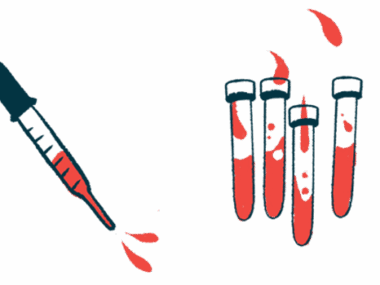Early immunosuppressive therapy better in AQP4-positive NMOSD
Earlier treatment linked to fewer relapses, less disability for patients: Study
Written by |

Early use of immunosuppressive therapy — when compared with a later treatment start — was associated with fewer relapses and reduced disability among neuromyelitis optica spectrum disorder (NMOSD) patients with self-reactive antibodies against the AQP4 protein, a study from China showed.
The data demonstrated a time-dependent treatment efficacy, with the best outcomes seen among patients starting immunosuppressive therapy within one year of disease onset.
“These findings underscore the importance of early treatment in NMOSD,” the researchers wrote, adding that these data “suggest that early … intervention may reduce the risk of recurrence” for individuals with the autoimmune disease.
The study, “Effects of early intervention in neuromyelitis optica spectrum disorder patients with seropositive AQP4 antibodies,” was published in the journal Frontiers in Immunology.
Scant data on early immunosuppressive therapy in AQP4-positive NMOSD
In NMOSD, the immune system mistakenly launches repeated inflammatory attacks that mainly damage the spinal cord and eye nerves. Most often, the disease is linked to the presence of self-reactive antibodies against AQP4, a protein found on nervous system support cells.
Left untreated, this inflammation can make NMOSD symptoms — including blurry vision and muscle weakness — come and go in phases. Attacks, or relapses, usually last for several days and are followed by periods of recovery, known as remissions. Each relapse causes new damage that accumulates over time, sometimes leading to vision loss and paralysis among patients.
Immunosuppressive therapy works by reducing the activity of the immune system, which can help prevent inflammatory attacks and ease symptoms of NMOSD. However, the benefits of starting this type of treatment early on have not been fully studied in patients who test positive for anti-AQP4 antibodies.
Now, a team of researchers from The First Affiliated Hospital of Wenzhou Medical University retrospectively analyzed data from 137 NMOSD patients with anti-AQP4 antibodies. All were treated with immunosuppressants at a single Chinese hospital.
Altogether, the patients underwent 174 treatments, using the immunosuppressive medications rituximab, mycophenolate mofetil, azathioprine, and tacrolimus. The patients started immunosuppressive therapy at a median of 14 months, or slightly more than one year, after their symptoms began, at a median age of 40.
On average, the patients were followed for about 2.5 years. At the last follow-up, immunosuppressive treatment had reduced the annualized relapse rate, or ARR — a measure of the number of relapses adjusted to a one-year time window — from a median of 1.95 to zero.
This reduction was significant for rituximab, mycophenolate mofetil, and azathioprine, but not for tacrolimus.
Starting immunosuppressive treatment in the year after NMOSD onset resulted in the greatest reduction in annualized relapse rate, the data showed. Delaying treatment reduced its benefits, indicating that early intervention may help achieve better outcomes.
The researchers noted, however, that “the other commonly used endpoint in NMOSD studies, time to next relapse, did not show the time-dependent effect.”
Still, rituximab was found to be the most effective treatment for prolonging relapse-free periods.
Patients treated with immunosuppressants also experienced a recovery in physical abilities. This was evidenced by a score reduction from a median of 3 to 2.5 points in the Expanded Disability Status Scale (EDSS), in which a higher score indicates worse disability. All medications were associated with a significant drop in EDSS scores.
Shorter time to treatment start linked to more disability reduction for patients
Further statistical analyses accounting for multiple factors showed that the time from disease onset to the start of immunosuppressive therapy was significantly associated with post-treatment EDSS score changes.
Although a shorter time to treatment start was linked to greater disability reduction, the data did not show a time-dependent efficacy similar to that found for annualized relapse rates, the team noted.
AQP4-related NMOSD patients “experienced a better reduction in recurrence with the early [immunosuppressive treatment] intervention, which may lead to [alleviating] the accumulation of neurological disability,” the researchers wrote.
Early intervention with [immunosuppressive treatment] in AQP4-antibody-positive NMOSD patients is associated with better outcomes in terms of reducing relapse rate and [easing] disability, highlighting the importance of prompt treatment.
These findings suggest that “early intervention with [immunosuppressive treatment] in AQP4-antibody-positive NMOSD patients is associated with better outcomes in terms of reducing relapse rate and [easing] disability, highlighting the importance of prompt treatment,” the team wrote.
Still, the researchers noted that further study is needed.
“Large-scale, multicenter studies with diverse patient populations and the inclusion of emerging therapies are essential to validate our findings and inform clinical decision-making in NMOSD management,” the team concluded.







